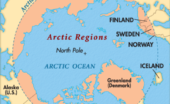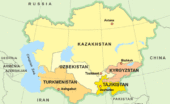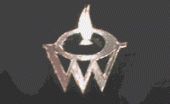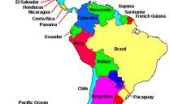Johannah Bernstein post: "eternally proud of my father’s extraordinary aeronautical engineering. legacy. here is a photo of the Canadair Water…
Wednesday Night #1697 with Commodore C. Uday Bhaskar
Written by Diana Thebaud Nicholson // September 10, 2014 // Reports, Wednesday Nights // 2 Comments
A truly fascinating and informative evening thanks to our delightful new guest,Commodore Chitrapu_Uday_Bhaskar.
Starting with some background, for the less informed, he pointed out that The Indian Ocean has a checkered history in the modern international system, led by great powers. Between the 15th and 19th centuries, the Ocean played a major role in heralding what Sardar KM Panikkar calls “the Vasco da Gama Epoch” in Asia, i.e. opening Asia to Western colonialism and maintaining Western hegemony on the vast continent for 300 plus years. The great contestation between the Portuguese, the Dutch, French and the British took place for the mastery of this Ocean and its littorals, eventually enabling the European powers to establish colonies all across Asia-Pacific. The Indian Ocean as conceived by them also included the Asian side of the Pacific to a great extent. During the Cold War the Indian Ocean once again became an important arena of contestation between the US and the Soviet Union, with the former playing a major role in the Persian Gulf oil politics and the monarchies ruling the regional states.
He then gave us a very complete foretaste of the lecture he would be delivering at McGill on Friday the 12th.
Maybe the three powers will evolve their politico-military strategies in such a manner to avoid direct confrontation as much as they can. Unlike the European contestation of the yesteryears, this framework generates possibilities for cooperation among these powers as far as the Indian Ocean as a global common is concerned. This is because, in today’s globalized world, major powers need not acquire direct control over specific territories as long as they do not prevent each other from achieving their individual economic and strategic goals including maritime rights. The Indo-Pacific Ocean, it is averred, is big enough to accommodate all the three navel powers – at least in the foreseeable future. Will this restraint continue beyond the next two decades?
The central question this proposal will address is the manner in which the tri-polar economic global order comprising USA, China and India will play out in the maritime / naval domain over the next two decades. Inheritors of a Mahanian doctrinal thinking, the USA is now re-arranging its military assets as part of the Obama ‘pivot’ aka re-balancing, even as China is acquiring higher levels of naval capability and has also demonstrated its ability to maintain a continuous naval presence in the Indian Ocean, ostensibly as part of an anti-piracy effort. This deployment by both the USA and China in the Indo-Pacific could be interpreted along the Corbett school of maritime strategy, wherein the co-relation between naval capabilities and the asymmetry sought on land acquires greater salience.
Here it is necessary to differentiate between the Indian Ocean and the western Pacific and the manner in which the USA and China have positioned themselves. The USA has a robust post World War II/ Cold War military alliance relationship with Japan and South Korea ; a tacit commitment to Taiwan ; and a variegated pol-mil relationship with the ASEAN collective. While the Soviet Union is now ‘former’ and Moscow does not pose the same threat that it did, China is causing deep anxiety in the region with its muscular assertiveness. In the last year, Beijing has been involved in complex territorial disputes with a pronounced maritime flavor with Japan, Vietnam and the Philippines and at the time of writing this proposal – a tense stand-off prevails between China and Vietnam over an oil-rig in the South China Sea. Whether the USA will get directly involved in these disputes that pit China against its East Asian neighbors is moot – and the texture of the western Pacific will be accordingly determined.
The operative distinction between the Indian and the Pacific oceans is that unlike the latter, the former is relatively free of any territorial disputes that involve the USA and China. While India is the resident power in the Indian Ocean, favored by geography and the USA claims littoral status due to its possession of the Diego Garcia island – in recent years China has been progressively establishing its naval presence in the Indian Ocean that began with an anti-piracy patrol on 2009. Concurrently another development that is gaining traction is the manner in which China has sought to acquire access to, or management rights, of bases and ports along the Indian Ocean littoral. Gwadar in Pakistan is case in point, as also Humbantota in Sri Lanka. At the same time, India has also made preliminary attempts to strengthen its security cooperation with Sri Lanka and Maldives. Although yet to be fully converted as military bases, these ports hold potential for Chinese expansion into the southern Ocean. However the hesitation of the Chinese to expand rapidly and the unwillingness of the smaller powers to allow the Chinese-built ports to be fully converted as naval bases have generated a pause to the latent Sino-Indian maritime rivalry. The smaller powers also maintain strong links with the US and cannot easily ignore Washington and Delhi’s sensitivities as well.
The Indian Ocean islands have historically been part of the colonial foot-print and both the USA and France claim IO littoral status given their possession of Diego Garcia and Reunion respectively. The research question this proposal will also explore is the degree to which elements of German maritime strategist Wegener, wherein political alliances could effectively trump the constraints of geography, could be applied to the emerging tri-polar animation in the Indian Ocean due to the individual compulsions of the USA, China and India.
India while being cognizant of the potential of the maritime dimension in its engagement with China has proceeded with great caution in this domain to minimize any possible tension with Beijing. Consequently the ‘look east’ policy is devoid of any significant military-maritime component and this despite discrete overtures made by some SE Asian states to enhance India’s naval presence in the region. Japan under PM Abe has renewed its tentative offer to strengthen its partnership with India and the maritime arena has been identified – but this again is constrained by Japanese political sentiment over the nuclear issue and India’s current profile as a state with nuclear weapons. But the possibility that Japan will also contribute to the strategic dynamic in the Indian Ocean depending on how the US-China-Japan relationship plays out in the western Pacific will merit consideration. And the emergence of a new government in India that will be more affirmative in its security policies could lead to an altered maritime orientation.
Thanks to this highly informative discussion, all those present will be watching developments in the Indian Ocean with far greater interest and understanding than they might otherwise have.
P R O L O G U E
Cleo Paskal is joining us and will be introducing Commodore (Ret’d) Chitrapu Uday Bhaskar, one of India’s leading experts and outspoken critics on security and strategic affairs. He is a columnist, editor, and contributor of numerous research-articles on nuclear and international security issues to reputed journals in India and abroad. He will be speaking at The McGill – Université de Montreal Centre for International Peace and Security Studies (CIPSS) on Friday, 12 September on “Ripe for rivalry or cooperation? The Indian Ocean in the 21st century.” We are looking forward to meeting and hearing from him!
Tuesday’s news that one of the ships of the Franklin expedition has been found has excited not only the Canadian media. While we heartily congratulate the search teams — a partnership between Parks Canada, the Royal Canadian Geographical Society, the Arctic Research Foundation, the Canadian Coast Guard, the Royal Canadian Navy and the government of Nunavut — we are steeling ourselves for the I-told-you-so tsunami of propaganda that will assault us from the PMO and the Conservative Party. Stephen Harper has long maintained that Franklin’s expedition laid the foundations of Canada’s Arctic sovereignty, although we aren’t quite sure how a British expedition that disappeared in 1845 did so, but Mr. Harper will no doubt explain that all in the 2015 election campaign. Will it impress the fellow members of the Arctic Council and particularly Mr. Putin with whom Mr. Harper’s relationship can best be described as frosty?
In a sharp counterpoint, Matthew Fisher uses the muzzling of retiring general Stu Beare as the starting point for a stinging criticism of the government’s defense spending policies:
Beare was muzzled by the Harper government a couple of weeks ago, preventing him from talking to journalists about the challenges that CJOC and Canada face during this period of global tumult.
… Such orders — and this was hardly the first — have long left the brass scratching their heads. After all, the government is constantly braying about Canada’s glorious military heritage and famously fond of talking as if nobody in the West is tougher on Russian President Vladimir Putin and terrorism.
And speaking of Vladimir Putin, David Kilgour highly recommends To Understand Putin, Read Orwell
Russian propaganda about Ukraine is today’s doublethink: it requires that people, as Orwell put it, “hold simultaneously two opinions which cancelled out, knowing them to be contradictory and believing both of them.” Russian propaganda daily pounds out two sides to every story, both of which are false, and each of which contradicts the other. Consider propositions [such as] … which should by now, after eight months of repetition, sound familiar.
On the one hand, Russia must invade Ukraine because the Ukrainian state is repressive. … On the other hand, Russia must intervene because the Ukrainian state does not exist.
In a preliminary report released Tuesday, investigators from the Netherlands leading the investigation into the downing MH17 announced that the plane broke up after being hit by “high-energy objects from outside the aircraft,” . The findings support the theory that plane was struck by a Russian-made SA-11 surface-to-air missile, also known as a Buk, but the report doesn’t comment on who might have been responsible for the downing – and the final report won’t come for about another year.
With a tenuous ceasefire in Ukraine and another in Israel/Gaza – though we cannot begin to understand why the Israeli cabinet decided to appropriate 988 acres of land on the West Bank, near the place where three Israeli teenagers were recently abducted and murdered, to make way for another illegal Jewish city – the world is focused on ISIS/Iraq/Syria On Wednesday evening, exactly one year after his first Syria speech (Remarks by the President in Address to the Nation on Syria, September 10 2013), President Obama is giving another, this time to outline his strategy for taking on the threat posed by ISIS. The Washington Post explains Why everything is different this time around .
Meanwhile, the international community (a different branch!) is also turning some attention to Africa’s Ebola crisis. Too little and too late? We hope not, but are reminded that in late June WHO was calling for action to meet the crisis.
As the 18 September Scottish referendum approaches, Survey finds support for independence jumped six points in the last month, putting yes vote at 38% and no vote at 39%. Gordon Brown is spearheading Labour’s last-ditch campaign to save the union. It all seems pretty civilized compared to Quebec referenda, although Andrew Coyne argues that there are great similarities to 1995 and in For our sake, as much as Britain’s, [we should] pray for a No vote in Scotland he presents some convincing arguments that there would be repercussions in Canada if the Scottish Yes won.
 Interesting footnote for genealogy and Royals buffs: the current Pretender to the throne of Scotland – via his mother, HRH Duchess Sophie, Princess of Bavaria – would be Prince Joseph Wenzel Maximilian Maria of Liechtenstein, Count Rietberg (who, coincidentally, was born in London on Victoria Day – 24 May 1995). He looks rather sweet (see picture). We wonder how he looks in the Royal Stuart tartan?
Interesting footnote for genealogy and Royals buffs: the current Pretender to the throne of Scotland – via his mother, HRH Duchess Sophie, Princess of Bavaria – would be Prince Joseph Wenzel Maximilian Maria of Liechtenstein, Count Rietberg (who, coincidentally, was born in London on Victoria Day – 24 May 1995). He looks rather sweet (see picture). We wonder how he looks in the Royal Stuart tartan?
However, with the announcement that William and Kate are expecting a second child the media is having a field day with conjecture that this is the news the No campaign desperately needs. Go ahead, just Google Will a new royal baby save the union? See Comment below
A sadly recurrent theme:
Canada’s War on Science Brings Us International Shame
A push to prioritize economic gains over basic research is endangering science and academic freedom in countries around the world, according to a new report published by a leading researchers union, the French National Trade Union of Scientific Researchers (SNCS-FSU). — who knew there was a national trade union of scientific researchers? Ah. but this is France. Anyway, they found that “governments internationally are pushing for policies “geared towards innovation in order to spur consumption and competitiveness,” according to Patrick Monfort, secretary-general of the SNCS-FSU. “Budget cuts are often blamed for our problems,” he said, “but they are only part of the picture.” Monfort told the prestigious journal Nature that scientists in Canada have been particularly hard hit, not only by broad funding cuts, but contentious communications protocols that prevent their freedom of expression. So now the rest of the world knows our dirty little secret. The report also notes Natural Resources Canada scientist Scott Dallimore who was not allowed to speak with media about a flood that occurred 13,000 years ago without receiving ministerial approval.
Congratulations to Mireille Silcoff on the publication – to rave reviews (e.g. Chez l’arabe brilliantly depicts a world of largely cloistered lives) – of her new book.
.




2 Comments on "Wednesday Night #1697 with Commodore C. Uday Bhaskar"
The Duke and Duchess of Cambridge announced this week that the Duchess is expecting their second child. Their son, Prince George, is already the world’s most famous baby. When William, Catherine and George visited Australia earlier this year, the Australian press dubbed George “the republican slayer” for increasing popular support for the monarchy just 15 years after a republic referendum.
Prince George’s future sibling is already having a political impact. The referendum on Scottish independence is Sept. 18 and there is British press speculation news of a new royal baby will encourage Scottish voters to vote “no” to leaving the United Kingdom. If the birth announcement influences the course of the referendum, William and Catherine’s second child will be the latest in a long line of royal babies to shape the course of Scottish independence.
The first negotiations for a union of the English and Scottish crowns took place in the 13th century. In 1286, Alexander III of Scotland died. His successor was his three-year-old granddaughter, Margaret of Norway. During his last years, Alexander corresponded with Edward I of England about a possible future marriage between Margaret and Edward’s son, the future Edward II.
There was cautious support for this marriage on both sides of the border because it had the potential to bring lasting peace to Great Britain. The plan was ultimately unsuccessful because Margaret died in the Orkney Islands in 1290, after suffering seasickness during the voyage from Norway to Scotland. Instead of a peaceful shared monarchy, Scotland experienced an English invasion and a bloody war of independence that lasted for decades before Robert the Bruce became King.
A royal baby once again had the potential to unite Scotland and England when six-day-old Mary became Queen of Scots in 1542. In England, Henry VIII saw an opportunity for a unification of Britain on his terms. Henry demanded that Mary’s mother, Marie of Guise, send him the baby queen to be raised at the English court for an eventual marriage to his four-year-old son, the future Edward VI.
Marie refused, and Henry invaded Scotland, a war that was known as “the rough wooing.” Mary spent her childhood in France, escaping English ambitions.
The ascension of Mary’s son, James VI of Scotland as James I of England in 1603 appeared to mark the end of the era when royal babies would influence Scottish independence. Under James, England and Scotland were independent kingdoms with a common monarch, a similar scenario to the one envisioned by the “yes” campaign in the present referendum. The arrival of a controversial royal baby later that century, however, contributed to the present unification of England and Scotland.
In 1688, the Roman Catholic James II celebrated the birth of a son. English Protestants, including James’s daughters, Mary and Anne, were alarmed by the prospect of a Catholic succession and circulated rumours that a healthy baby boy had been smuggled into the queen’s bedchamber in a warming pan.
James II’s son-in-law, William of Orange, invaded England that year and James II, his wife and son went into exile. William III, Mary II and Anne were childless and England was concerned that Scotland would acclaim James II’s son “the Old Pretender” as King instead of the Protestant George of Hanover. The 1707 Act of Union ensured that there would be a single kingdom with a single line of succession.
If the news of a second child for the Duke and Duchess of Cambridge influences the outcome of the present Scottish referendum, the baby will join a long history of royal births that shaped the course of Scotland’s independence.
At key points in history, the future of Scotland was determined by the presence of a royal baby.
many tks for inviting me to your wed’day night Round Table
i found it very stimulating…and must commend you and david for sustaining this inititaive…..that cleo had told me about. Uday Bhaskar (12 September)